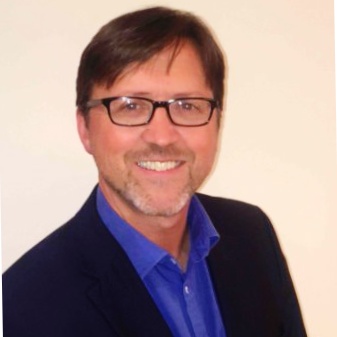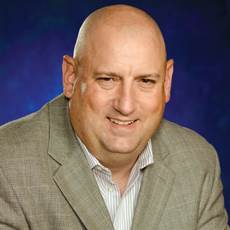Healthcare IT
Thought Leaders in Healthcare IT: ClearDATA CEO Darin Brannan (Part 1)

The infrastructure requirements of healthcare IT are particular. Darin discusses the issues.
Sramana Mitra: Let’s start by introducing our audience to ClearDATA as well as yourself.
Darin Brannan: I’m the Co-Founder and CEO of ClearDATA headquartered out of Austin, Texas. I’ve been in the tech business for about 25 years, mostly out of the Bay Area. For the past six years, I’ve been directly and almost exclusively focused on the healthcare IT market. Much of my family is in healthcare as physicians or practitioners. I’ve been around healthcare for a long time. ClearDATA’s >>>
Thought Leaders in Healthcare IT: John Damgaard, CEO of MatrixCare (Part 5)
Sramana Mitra: Right now, you are equating low cost with untrained labor. It doesn’t have to be so because there is such pressure on jobs. Over the next 30 years, the level of pressure on jobs is going to be tremendous. The level of unemployment is going to go through the roof because of automation. You have all these excess people who can be trained to provide trained care at low cost. That’s probably going to be one of the trends of American society.
John Damgaard: Supply and demand works. You have an available labor pool. It will be put to work. It still doesn’t solve the fact that if you look at the demographic imbalance and the number of young people versus the population of the elderly, we are a rapidly maturing society. Even if they had nothing else to do, there’s not enough of them to provide the care, given the logistical challenges. Trained or untrained, all of that doesn’t matter. There’s not enough labor to go around. >>>
Thought Leaders in Healthcare IT: John Damgaard, CEO of MatrixCare (Part 4)
Sramana Mitra: There’s stuff like that going on. There are venture-funded solutions that are going after that market also. From my point of view, the big trend that I see is that America never used to be a place where there was a lot of cheap labor available. I grew up in India. In India, the issue of elder care is much more manageable just because there’s such a large population of cheap labor available. It’s a society that is generally very community-oriented and very compassionate. People don’t throw their elders under the bus, basically.
John Damgaard: I understand. You’re exactly right. The reality is, if you rewind the time by 150 years in the US, here’s what healthcare looked like and senior care looked like. You had multiple generations living in very close proximity, often, on the same piece of land. We call them family farms. Who bore the burden of senior care? The family. >>>
Thought Leaders in Healthcare IT: John Damgaard, CEO of MatrixCare (Part 3)
Sramana Mitra: In terms of home care centers utilizing technology, what are the trends?
John Damgaard: On the caregiver side, there are tools to drive operational efficiencies and to match the caregiver labor force to where they’re needed. Think of the concept of Uber for home care where you’re able to see what home care agent assets are in a given region. That’s on the operational side of things. The tele-health monitoring device is interesting. >>>
Thought Leaders in Healthcare IT: John Damgaard, CEO of MatrixCare (Part 2)
John Damgaard: The US government pays for over 50% of the total bill of long-term post-acute care. In case anyone’s noticed, we borrow about a trillion dollars a year to do that. By the way, that population is living longer so that translates to enormous problems. The innovation opportunities are also enormous. We have to bend dramatically the cost quality and access curves for healthcare in our space. The only way to do that is to use different technologies as levers.
For example, one of the things that is being done is attempting to shorten the length of stay in facility-based care settings because they’re very expensive and get people back at home sooner. The challenge with that is the care plan management and oversight is difficult when you have individuals in a home-based setting. >>>
Thought Leaders in Healthcare IT: John Damgaard, CEO of MatrixCare (Part 1)
Senior populations in all parts of America are ballooning. The population of unemployed younger people will also balloon as automation ravages American society. Can these two trends converge to find a happy middle ground with the mission of creating a compassionate, humane society?
Sramana Mitra: Let’s start by introducing our audience to MatrixCare as well as yourself.
John Damgaard: My name is John Damgaard. I’m the President and CEO of MatrixCare. MatrixCare is focused on the spectrum of US healthcare known as long-term post-acute care, which is a traditional name used to describe what we do. I often question whether it’s the best term to describe what we do. We’re in the business of pre-acute care primarily for the senior population ensuring their ongoing health and wellness as they move across their lives and as they move across the spectrum of care. >>>
Thought Leaders in Healthcare IT: Jas Grewal, CEO of CareSkore (Part 6)
Sramana Mitra: That I don’t agree with. Just like you did, while you had your job, you started researching your product and validating your idea to a large extent. This is based on research. That has a higher survival rate. If you quit your job and jump with both feet into something that is not validated at all, the chances of you not having a validated business ever is very high.
Jas Grewal: What I meant to say is that, at a certain point, you have to pull the trigger and commit.
Sramana Mitra: Yes. That point is not when you come up with the idea. >>>
Thought Leaders in Healthcare IT: Jas Grewal, CEO of CareSkore (Part 5)
Sramana Mitra: Tell us a little bit about your company. You’re a venture-funded company in the Bay Area, right?
Jas Grewal: Yes, we are. The company started in 2015. We signed on a couple of pilot customers that we built our initial products around. We were looking at data. We were working incognito for a couple of years just doing a lot of data research. Then we started testing with a couple of customers. We got into YCombinator.
Sramana Mitra: You got into YCombinator after two years of doing your data research and validating with a couple of customers? >>>

